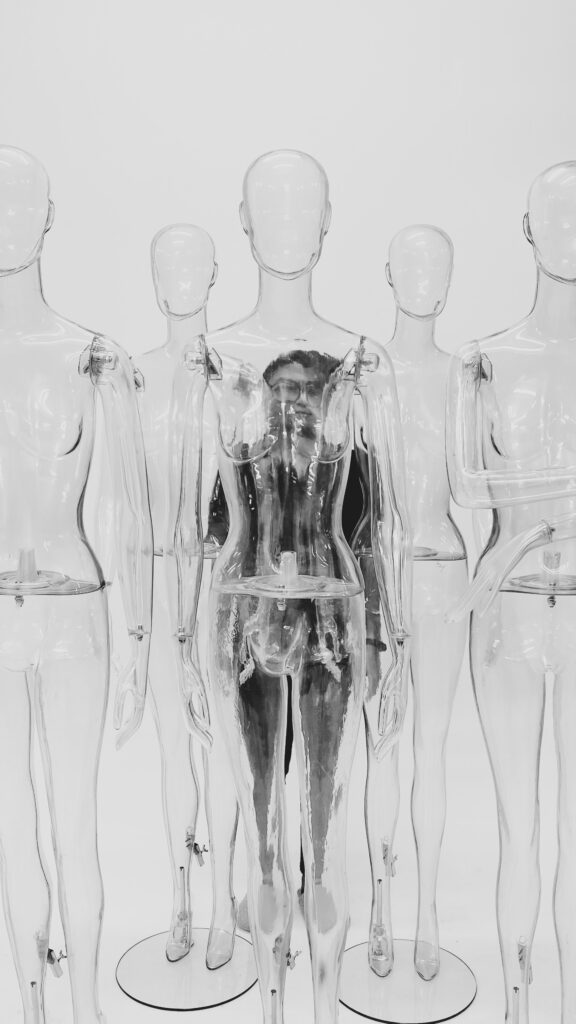With a surge in demand for online clothes shopping over the past two years, fashion consumers have become accustomed to buying before trying. Before now, this had proven dangerous for both the purchaser and the buyer as, let’s face it, we’re all different shapes and sizes – and rightly so.
According to figures from Statistica, over half of UK, German and Dutch consumers bought fashion or sportswear online in 2019. In addition, research shows that a quarter of all consumers return between five and fifteen percent of the items they buy online each year.
One company looking to utilize technology to help bridge the gap and reduce the number of returns in the fashion industry is Metail. The platform, launched in the UK in 2008, allows designers to showcase 3D clothes on true-to-life virtual models. It’s making waves across Europe through its unique ecoshot imagery, providing realistic clothing dummies that accurately reflect different sizes and body shapes. With it being used as a product design aid, it’s one of the newer technology features that looks set to change the world of fashion for good.
Rebecca Lee spoke to Metail CEO Jim Downing and asked him where the concept for merging tech and fitting fashion was born, the technology behind it, and the metaverse.
Where did the concept for Metail come from?
It all began when Metail’s founder and ex-CEO Tom Adeyoola noticed how much his girlfriend struggled to find clothes that suited her body shape. He quickly realized that some computer vision technology he saw at the University of Cambridge could hold the key to making it easy to create body models for people quickly and easily online. As a result, he set up Metail to help online shoppers understand how clothes would look on them, and we’ve been exploring ways to visualize clothes and people together since.
2. In your opinion, what are the biggest challenges virtual fashion faces now?
A big challenge that lies in delivering value from virtual fashion and 3D is that there are few people outside the C-suite with the means and remit to make the most of virtual fashion. This gives a massive edge to brands who are willing to commit to innovation, particularly to the startups and newer brands who embrace it.
Can you tell me a bit about the technology powering Metail?
Of course, so ecoshot tech is divided up into two parts. First, we create super-accurate avatars of models posed to match photos we’ve taken of them. The brands then use these to dress and drape 3D clothes. To create photorealistic images, we then create visualizations (ray traced renders) of the garments and combine them with the photos we took of the models. When it comes to technology choice, we like to take a really practical approach, so whilst we have computer vision and machine learning in parts of our tech and deep expertise in those areas, the majority of the impact is from careful work in 3D body modelling, animation, computer graphics, and image processing techniques.

Apart from clothing, have you any plans to sell other products via 3D modeling?
We’ve worked with designers to incorporate 3D footwear into their ecoshot images, and we’ll probably look at bags in the future. We don’t feel short of a challenge sticking to just clothing, though – it’s one of the most challenging problems!
How accurate are AR/VR virtual fashion try-on?
Unfortunately, there isn’t one single or simple answer to that question. To give a truly accurate try-on takes a lot of detailed input. You need a good shape scan for the body as part of the try-on experience. For the garment, you need the cutting pattern for all the sizes or a sample in every size and a detailed analysis of the fabrics for their mechanical and visual properties. That’s why ecoshot is used mainly in Product Development, they have all of the garment inputs necessary, and we bring body scanning and combination expertise.
Most virtual try-on tech works by extrapolating most size options from a scan or 3D twin of a single reference size and often predicts the body shape from a single image silhouette or a few key measurements. Both of these can introduce errors.
What makes Metail different from other B2B fashion platforms?
Most ecoshot’s customers are in Product Development and need imagery that’s highly faithful to the physical end product and visually appealing. By focusing on the details of the technology in graphics, lighting, rendering, etc., and the needs of brands and their suppliers, I am confident we’ve been able to create a best-of-breed product.
Has demand for virtual fitting rooms increased since COVID, and are they here to stay?
Demand and interest in virtual fitting significantly increased at the pandemic’s start. I can’t see interest in the area going away any time soon. Buying clothes is hard enough in person, and the move to e-commerce has involved trade-offs. I think it’s way easier to find a range of potentially suitable garments but much harder to evaluate whether anyone suits you before purchase.
What’s your view on fashion and the metaverse?
One of the things that makes fashion an interesting area to work in is that we wear them partly for utility and partly to express our identity, creativity, and belonging. If you’re familiar with Maslow’s hierarchy of needs, these groups of needs are at very different levels. Meeting those higher-level needs is what has driven a lot of the excess in the fashion industry and caused a lot of its sustainability problems as a result.
There’s a vision that metaverse fashion could solve this, that we’ll wear an entirely utilitarian wardrobe in the physical world and give full range to our creativity and imagination in the metaverse, without the sustainability impact. I’m pretty sure that extreme situation won’t happen. Still, I’m excited about anything that can offer people a way to self-expression that’s an alternative to the awful sustainability impact of buying and quickly disposing clothes.
What are your ambitions for Metail?
For the rest of 2022, we plan to improve ecoshot’s scalability, making it possible for increasing numbers of 3D designers to use more ecoshot models and create images quickly. Beyond that, we will be expanding to cover different kinds of product imagery and working on a product for B2C brands to help their customers better understand how the clothes will fit.



